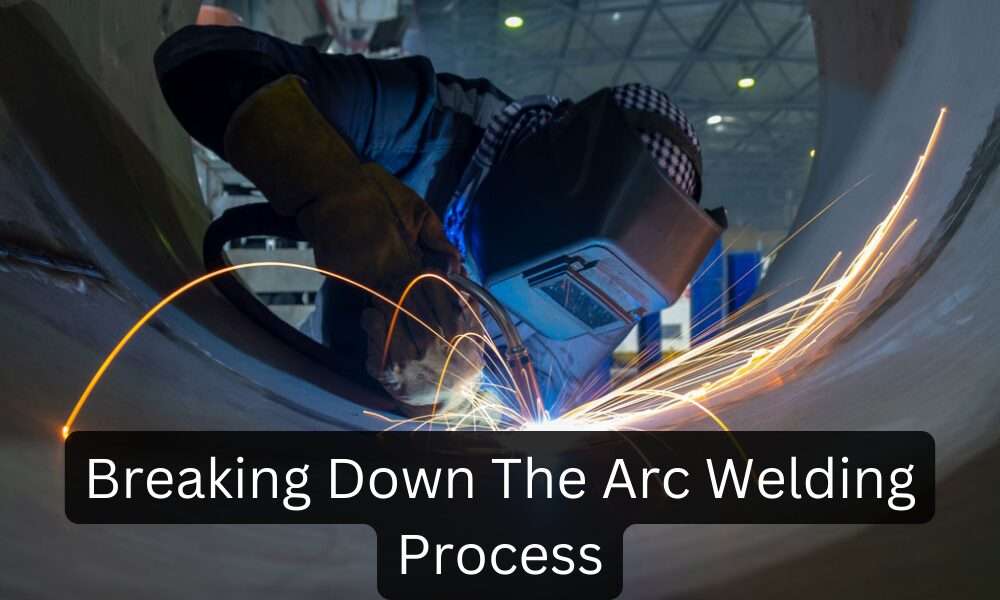The Basics of Arc Welding
Arc welding is a widely used technique in the field of metal fabrication. It involves the use of an electric arc to create a high-temperature fusion between two metal workpieces. This Arc welding process is commonly used in industries such as construction, automotive, and manufacturing.
Step 1: Preparation
Before starting the arc welding process, it is crucial to ensure proper preparation. This includes cleaning the workpieces to remove any dirt, rust, or contaminants. It is also essential to secure the workpieces in the correct position, using clamps or fixtures, to ensure stability during welding.
Step 2: Selecting the Electrode
Choosing the right electrode is essential for a successful arc welding process. Electrodes are available in various types, each with its unique characteristics. Factors such as the type of metal being welded, the welding position and the desired weld quality should be considered when selecting the electrode.
Step 3: Setting the Welding Machine
Once the electrode is selected, it is necessary to set up the welding machine. This includes adjusting the current, voltage, and wire feed speed to match the requirements of the welding process. It is crucial to follow the manufacturer’s guidelines and recommendations for the specific machine being used.
Step 4: Striking the Arc
The next step is to strike the arc. This is done by bringing the electrode close to the workpiece and then quickly pulling it back. The electric current flowing through the electrode creates an arc that generates intense heat, melting the metal and forming a weld pool.
Step 5: Welding Technique
Proper welding techniques are essential for achieving high-quality welds. The most common arc welding techniques include the drag technique and the push technique. The drag technique involves moving the electrode along the joint in the direction opposite to the welding. The push technique, on the other hand, involves moving the electrode in the same direction as the welding.
Step 6: Maintaining the Arc
During the welding process, it is important to maintain a stable arc length. The arc length refers to the distance between the electrode and the workpiece. It is crucial to keep the arc length consistent to ensure a uniform weld bead and prevent issues such as porosity or lack of fusion.
Step 7: Welding Progression
The welding progression refers to the order in which the weld beads are deposited. The most common welding progressions include the stringer bead, weave bead, and multiple pass techniques. The choice of welding progression depends on factors such as joint design, material thickness, and welding position.
Step 8: Post-Welding Inspection
After completing the welding process, it is important to perform a post-welding inspection. This involves visually inspecting the weld for any defects such as cracks, porosity, or lack of fusion. Non-destructive testing methods such as X-ray or ultrasonic testing may also be used to ensure the integrity of the weld.
Step 9: Welding Safety
Ensuring safety during the arc welding process is of utmost importance. Welders should wear appropriate personal protective equipment (PPE) such as welding helmets, gloves, and protective clothing. Adequate ventilation should be provided in the welding area to prevent the inhalation of fumes and gases generated during the process.
Conclusion
Arc welding is a versatile and widely used process in the metal fabrication industry. By following the step-by-step techniques outlined above, welders can achieve high-quality welds and ensure the integrity of the final product. Remember, proper preparation, electrode selection, machine setup, and welding technique are crucial for successful arc welding. Always prioritize safety and perform post-welding inspections to ensure the quality of the weld.
FAQS:
What is the main cause of electrical shock in the shielded metal arc welding process?
The main cause for electrical shock in the shielded metal arc welding (SMAW) process is typically contact with the electrode or welding rod. During SMAW, an electric arc is created between the electrode and the workpiece, producing intense heat for welding. If the welder inadvertently comes into contact with the electrode or the workpiece while the welding machine is energized, it can result in an electrical shock.
shielded metal arc welding process requires what type of welding power sources?
The shielded metal arc welding (SMAW) process typically requires constant current (CC) welding power sources.
what is the basis of the arc welding process?
The basis of the arc welding process lies in creating an electric arc between an electrode and the workpiece. This arc generates intense heat, melting the materials and allowing them to fuse when the arc is maintained at the proper distance.

